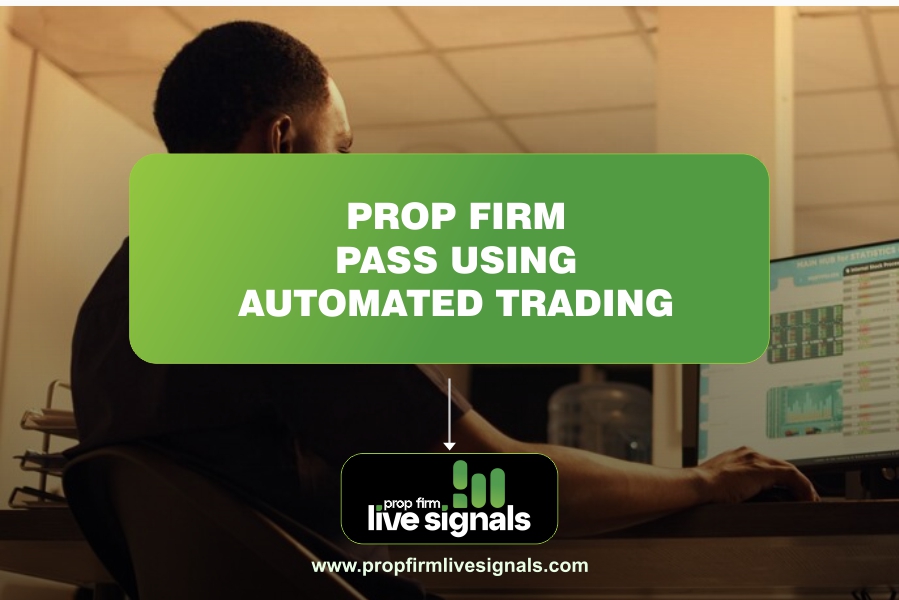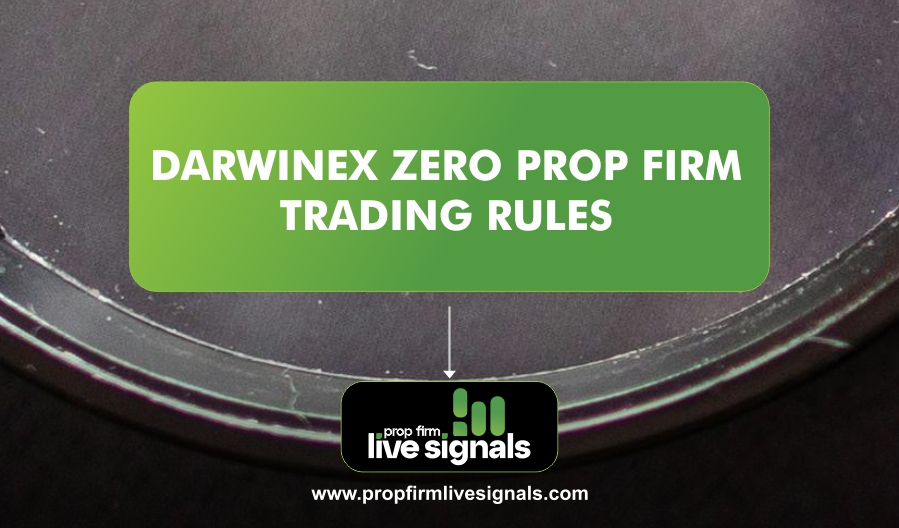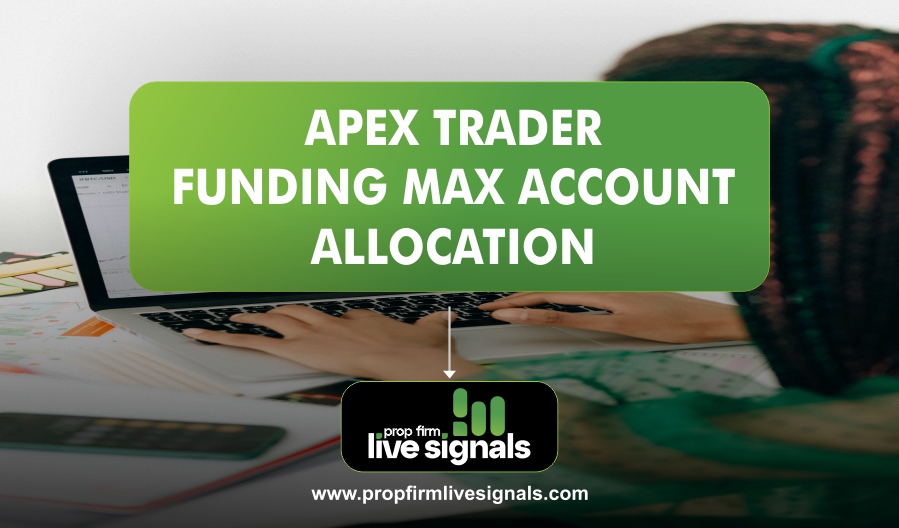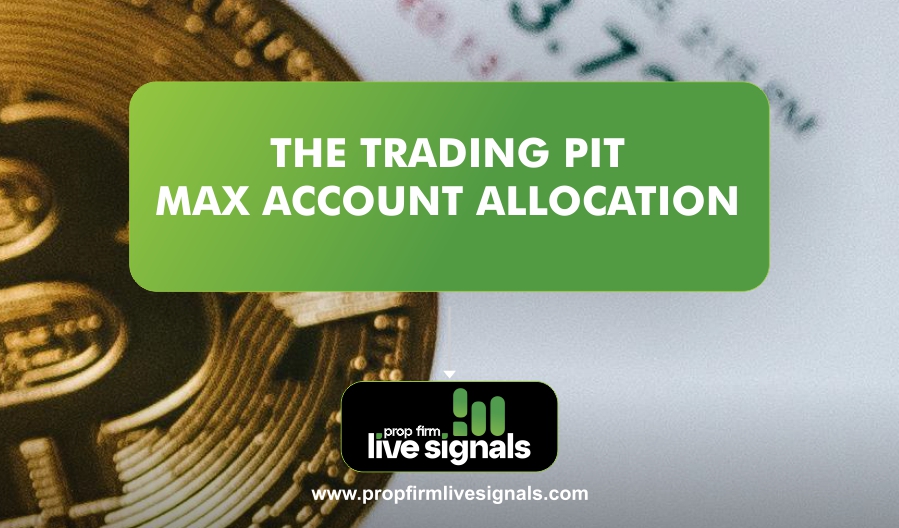With the rise in algorithmic trading and automated systems, trading has transformed, making it easier for traders to adopt sophisticated strategies without the emotional biases that often come with trading manually.
This article explores how automated trading systems can overcome prop firm challenges, highlighting the benefits, strategies, and considerations essential for success.
Understanding Prop Firms
Proprietary trading firms, popularly known as prop firms, give the trader an avenue to trade with the firm’s capital and not the trader’s own.
This model allows the trader to earn big, sometimes, from trading without taking personal financial risks associated with trading. Traders must first pass specific tests or challenges to prove their trading skills and risk management abilities.
Evaluation Criteria
The evaluation criteria set by prop firms often include:
- Profit Targets: Traders are required to reach certain amounts of profit within a certain time.
- Drawdown Limits: Prop firms set very strict limits on the level of maximum allowable drawdown to ensure that traders manage risks efficiently.
- Trading Style Compliance: Traders must fit within the firm’s guidelines related to trading styles and strategies.
The Role of Automated Trading Systems
Automated trading systems, widely referred to as trading bots or Expert Advisors, are designed to execute trades based on predefined algorithms and strategies.
In this regard, the systems analyze market data to perceive and realize trading opportunities much faster than a human trader would. Some of the advantages of using an automated system in prop firm challenges are as follows.
Advantages of Automated Trading
- Consistency: Algorithmic-based automated systems ensure consistency in trade execution, unfettered by emotional interference.
- Speed: With the ability to process vast volumes of data and execute trades in milliseconds, trading bots enable traders to take advantage of even the briefest market opportunities.
- Risk Management: An automated system can be designed with robust risk management features, such as stop-loss orders and position sizing rules, which are key to meeting prop firm requirements.
- 24/7 Trading: Unlike human traders, automated systems can operate continuously, taking advantage of global market movements at any time.
Common Pitfalls
While automated trading has numerous advantages, several common pitfalls should be avoided:
- Over Reliance on Automation: Traders should not get too comfortable; strategies need constant monitoring and realignment.
- Disregard to Market Conditions: Automated systems need to be adaptive; not paying attention to the shifting market landscape could result in huge losses.
- Not Performing Backtesting: Inadequate backtesting may lead to the real-life implementation of weak strategies that will never satisfy any prop firm.
Building a Trading Bot
Developing a trading bot is a multifaceted process that requires careful planning, focusing on both trading strategies and technology. A well-defined trading strategy forms the backbone of any profitable trading bot, guiding its decision-making rules.
1. Defining a Trading Strategy
The first step in building a trading bot is defining a robust trading strategy. A good trading strategy should be based on objective data driven criteria and able to adapt to different market conditions. Some elements that compose an effective strategy include:
- Market Conditions: A successful strategy considers the current market trends and conditions. The bot should be able to identify whether the markets are trending, ranging, or highly volatile and make decisions based on the market environment.
- Technical Indicators: Technical indicators such as MA, RSI, and MACD are included in this bot to analyze the behavior of the market for future price prediction. These also signal the bot on entry and exit points for the trades.
- Risk Parameters: Setting up risk parameters is of essence to ensure the bot operates conservatively with respect to prudent risk management practices. This involves setting up stop-loss levels, size of position, and drawdown limits, more so when working with prop firms that have specific risk management guidelines.
2. Coding the Bot
Once a defined strategy is in place, the next step involves coding the bot. That can be done using platforms like MetaTrader 4 (MT4) or MetaTrader 5 (MT5), which allow easy-to-use environments for coding EAs. Key things to include in your coding are:
- Entry and Exit Conditions: Predefined rules about when the bot is supposed to enter or exit trades, based on the selected strategy.
- Risk Management Features: Implement stop-loss orders and take-profit levels to correspond with a prop firm’s requirements.
- Performance Indicators: Include indicators that will enable backtesting and optimisation of the bot’s performance.
3. Backtesting
Backtesting is a critical step in validating a trading bot’s effectiveness. Historical data is used to simulate how the bot would have performed under various market conditions. This process helps identify potential weaknesses in the strategy and allows for adjustments before deploying the bot in live markets.
Choosing the Right Prop Firm
Selecting a prop firm that aligns with one’s trading style and goals is paramount. Key factors to consider include:
- Permitted Trading Strategies: Not every company allows automated trading. So, one should select such a firm that supports algorithmic strategies.
- Profit-Sharing Scheme: As the very purpose of trading is to generate revenue, understanding the profit split system of a firm can affect a trader’s long-term profitability.
- Evaluation Process: Getting a grip on the evaluation process makes sure that the trader’s expectations are met with what the firm needs.
Risk Management Considerations
The use of automated systems in prop firm challenges requires attention to the following key areas of risk management:
- Drawdown Limit Adherence: Automated systems need to be programmed not to exceed maximum drawdown limits imposed by the prop firm. Proper Position Sizing: Suitable position sizing in regard to account equity is very important to limit risks related to large losses.
- Monitoring Performance: Regular monitoring of the performance of the automated system allows for timely adjustments of its trading patterns due to changes in market conditions.
- Position Sizing: Adjusting position sizes based on account balance and risk tolerance ensures that no single trade has an outsized impact on overall capital.
Testing in Live Conditions
Before fully engaging in live trading with a prop firm challenge, traders should conduct live testing with a demo account or smaller capital allocation. This allows them to observe how their automated system performs in live market conditions without exposing significant funds.
1. Simulated Trading Environments
This helps traders test the real-time performance of their bots using a trading environment simulator without carrying any financial risk related to live trading.
2. Market Condition Adjustments
The dynamics of the market change very fast, and a trader must always be ready for this. Keeping an eye on the market conditions and regularly adjusting their strategies ensures that they remain in tune with the prop firm requirements.
Want to take your trading to the next level?
Take advantage of our LiveSignals, your go to resource for dependable, real-time trading signals, you can eliminate uncertainty from trading.
Propfirmlivesignals is the answer to your constant success in the markets!
You will always be on top of your game with expert analysis and real-time updates. Never let this chance slip away to supercharge your trading journey.
More Info Click here.
Frequently Asked Questions (FAQs)
What is automated trading?
- Automated trading uses trading bots or Expert Advisors (EAs) to execute trades based on pre-set algorithms and market conditions, removing emotional decision-making for consistent trade execution.
How does automated trading help in passing prop firm challenges?
- Automated trading helps traders pass prop firm challenges by ensuring consistent execution, reducing emotional bias, enabling continuous monitoring, and enforcing strict risk management.
What are general requirements to pass a prop firm challenge?
- Passing requirements for a prop firm challenge often include hitting a certain profit within a certain time, not exceeding daily and overall drawdown limits, and showing good risk management practices.
Can any trading strategy be automated?
- Although lots of trading strategies can be automated, not all strategies are suitable to be automated. Any strategy that involves discretionary decisions or complex human judgment could be very challenging to code correctly. Success with automation requires clear, rule-based strategies.
How do I choose the right prop firm for automated trading?
- When choosing a prop firm for automated trading, consider evaluation criteria, profit targets, drawdown limits, system support, reputation, and terms.
How important is backtesting for an automated trading strategy?
- Backtesting can hardly be more important for a view on how well the automated trading strategy performs against historical data. It allows for the identification of weaknesses that may arise, optimization of parameters, and overall profitability check before deploying the strategy into live markets.
What should I do if my automated system is not performing well during the challenge?
- If an automated system is not performing well during a challenge, you should review and analyze its performance metrics. You can adjust the entry/exit criteria, risk management rules, or the strategy itself, or pause it until you make improvements.
Is there any cost for joining a prop firm?
- Many prop firms charge for training programs or require an evaluation process before granting access to capital. It’s crucial to know what associated costs there will be upfront and determine whether they fit with your goals.
Is it possible to practice using demo accounts before taking a prop firm challenge?
- We highly recommend practicing with demo accounts before attempting a prop firm challenge. This lets traders test their strategies and gain experience without risking real capital.




